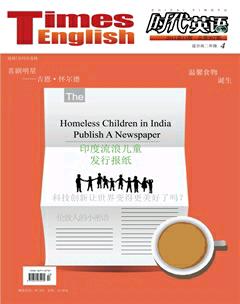是什么加快了春天到来的脚步?
The Earth's temperature is rising. And as it does, springtime phenomena — like the first bloom of flowers — are getting earlier and earlier. But rising temperatures aren't the only factor. Urban light pollution is also quickening the coming of spring. "So temperature and light are really contributing to a double whammy of making everything earlier." Richard Ffrench-Constant, an entomologist at the University of Exeter.
He and his colleagues compiled 13 years of data from citizen scientists in the U.K., who tracked the first bud burst of four common trees. Turns out, light pollution — from streetlights in cities, and along roads — pushed bud burst a full week earlier. Way beyond what rising temperatures could achieve. This disruptive timing can ripple through the ecosystem.
"The caterpillars that feed on trees are trying to match the hatching of their eggs to the timing of bud burst. Because the caterpillars want to feed on the juiciest and least chemically protected leaves. And it's not just the caterpillars, of course, that are important. But the knock-on effect is on nesting birds, which are also trying to hatch their chicks at the same time that there's the maximum number of caterpillars." So earlier buds could ultimately affect the survival of birds, and beyond. The findings are in The Proceedings of the Royal Society B.
The world's becoming increasingly urbanized, and light pollution is growing — which Ffrench-Constant says could trick trees into budding earlier and earlier. But smarter lighting — like LEDs that dial down certain wavelengths — could help. "Perhaps the exciting thing is, if we understand more about how light affects this bud burst, we might be able to devise smarter sort of street lighting that has less red components, and therefore less early bud burst." Thus keeping springtime an actual springtime phenomenon.
地球溫度正在上升。因此,花儿首次盛开等春季现象的出现时间会越来越早。但是,不断升高的气温并不是唯一的影响因素。城市光污染同样加快了春天到来的脚步。“因此,在温度和光线的双重冲击下,一切都提早到来。”理查德·费伦奇·康斯坦特是英国埃克塞特大学的昆虫学家。
他和他的同事对英国科学家统计了13年的数据进行编制,这些科学家对四种常见树木进行追踪,观察它们第一次萌芽的时间。结果发现,城市及道路两边的路灯造成的光污染,会使树木的发芽时间提前整整一个星期。这种影响比温度上升造成的影响要更显著。这种破坏性的时机会对生态系统造成影响。
“以树木为食的毛毛虫正试图将自己的孵卵时间与树木的发芽时间相匹配。因为毛毛虫要以最多汁、最少受化学物质保护的树叶为食。不仅毛毛虫是这样,当然,这一点很重要。这种连锁反应体现在筑巢鸟类身上,它们试图在毛毛虫数量最多的时候孵化鸟蛋。”因此,提前发芽最终可能会影响鸟类的生存,甚至产生更加深远的影响。该项研究结果发表在《英国皇家学会学报B》上。
世界越来越城市化,光污染的范围也在逐渐扩大,费伦奇·康斯坦特表示这种情况会欺骗树木,使其发芽的时间越来越早。但是LED这样的智能灯光会调低特定的波长,这可能会有所帮助。“也许令人感到兴奋的是,如果我们对灯光如何影响发芽有更多了解,我们也许能设计出发出更少红光的智能路灯,这样就可以使发芽时间少提前一些。”进而让春天呈现出实际的春天现象。
【词汇积累】
factor n. 因素,要素
track v. 记录(研究)……的行为(发展)
ecosystem n. 生态系统
knock-on adj. 使产生连锁反应的
urbanize v. 使城市化,使都市化

